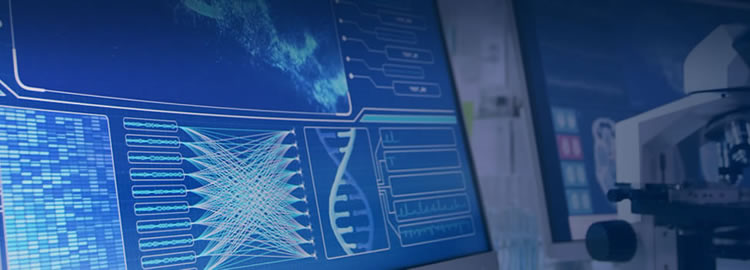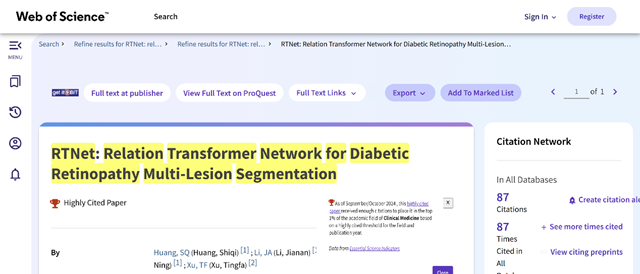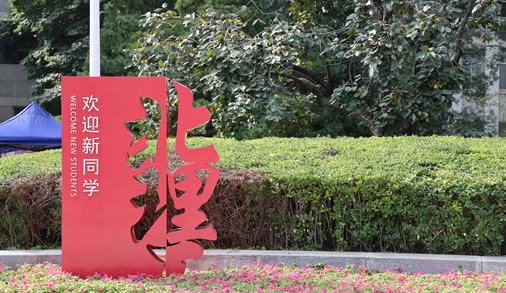

Updated: 2025-03-20

According to the data from "Essential Science Indicators in Web of Science", a scientific paper published by Professor Xu Tingfa's research team at the School of Optoelectronics, the Beijing Institute of Technology (BIT), has been identified as a highly cited paper in the ESI database.
This data indicates that based on a high citation threshold in the corresponding field and publication year, the paper has been ranked in the top 1 percent of the most outstanding papers in the field of clinical medicine published that year.
Its academic value has garnered attention and recognition from researchers in this field worldwide.
The research paper titled RTNet: Relation Transformer Network for Diabetic Retinopathy Multi-lesion Segmentation was published in the journal IEEE Transactions on Medical Imaging (IEEE TMI). This journal is issued by the Institute of Electrical and Electronics Engineers (IEEE) and primarily publishes original articles on medical imaging achieved through methods such as ultrasound and optical techniques. It focuses on new acquisition techniques, medical image processing and analysis, visualization and performance, pattern recognition, machine learning and related methods. It is one of the most influential journals in the field of artificial intelligence in medical imaging, with an impact factor of 11.3 in the past five years.
This research paper addresses the challenges in the multi-lesion segmentation task of diabetic retinopathy (DR), including the lack of utilization of pathological correlations between lesions and the ambiguity in lesion detection due to the complexity of retinal tissue. To tackle these challenges, the paper proposes a Relation Transformer Network (RTNet), as shown in Figure 1. This method shares basic features to ensure computational efficiency while employing a dual-branch architecture to separately process lesion and vessel information.

Figure 1 Diabetic retinopathy multi-lesion segmentation model
By utilizing relation transformer modules, the RTNet leverages self-attention mechanisms to explore global dependency relationships between lesions and introduces blood vessel information into lesion segmentation through cross-attention mechanisms to reduce ambiguities in detection caused by the complex retinal structure. Additionally, a global transformer module is introduced to preserve detailed information and enhance the capability to capture small lesions.
This method has achieved leading segmentation performance on the IDRiD and DDR datasets, significantly improving the model's detection accuracy, enhancing the interpretability of medical models, providing a new effective solution for multi-lesion joint segmentation, and demonstrating wide application potential in the field of medical image analysis.
Paper details: S. Huang, J. Li, Y. Xiao, N. Shen and T. Xu, "RTNet: Relation Transformer Network for Diabetic Retinopathy Multi-lesion Segmentation," in IEEE Transactions on Medical Imaging, doi: 10.1109/TMI.2022.3143833.














